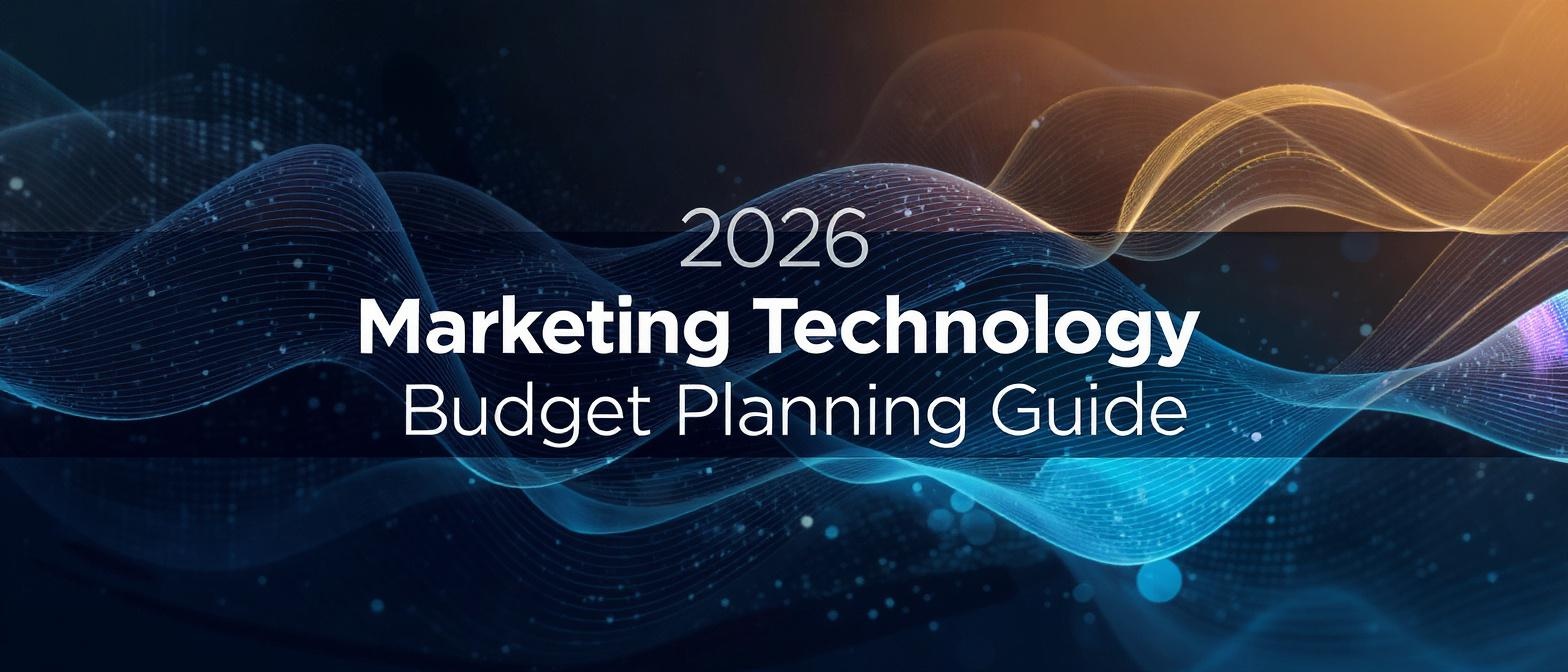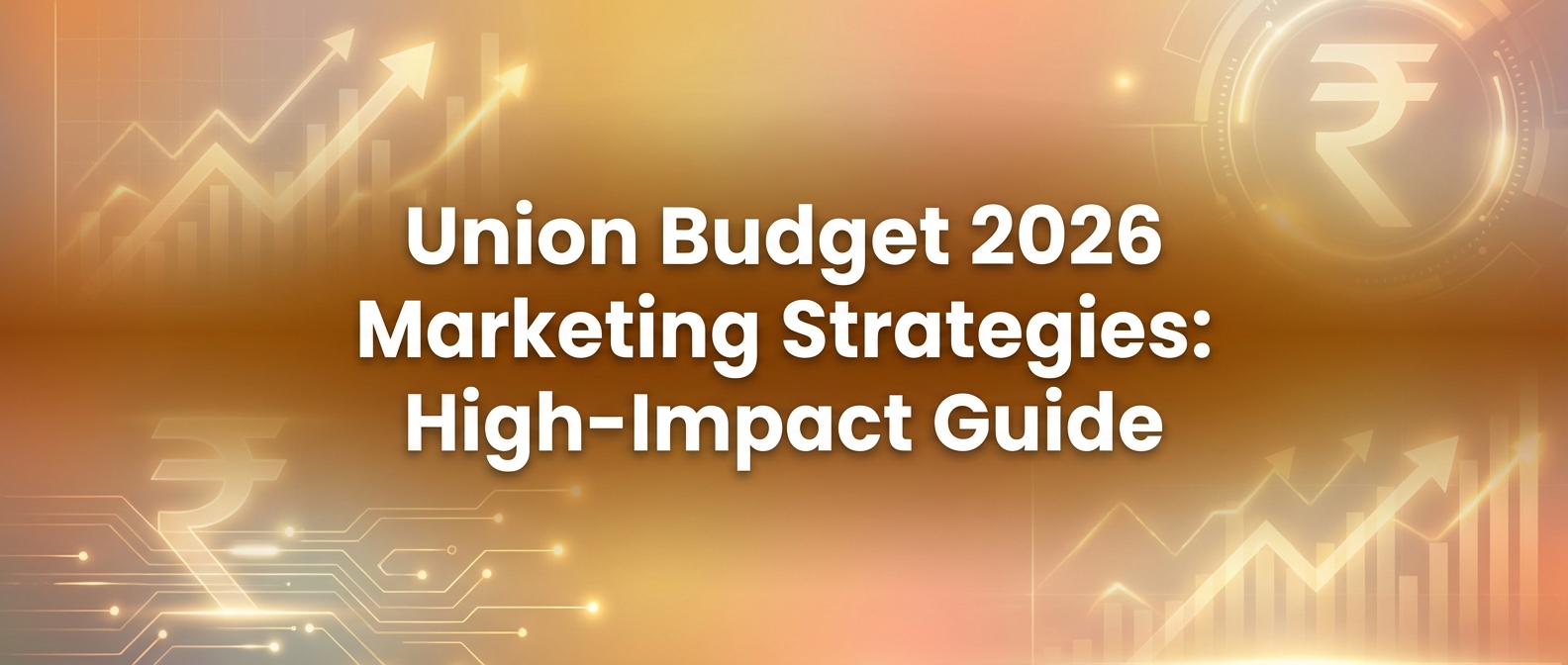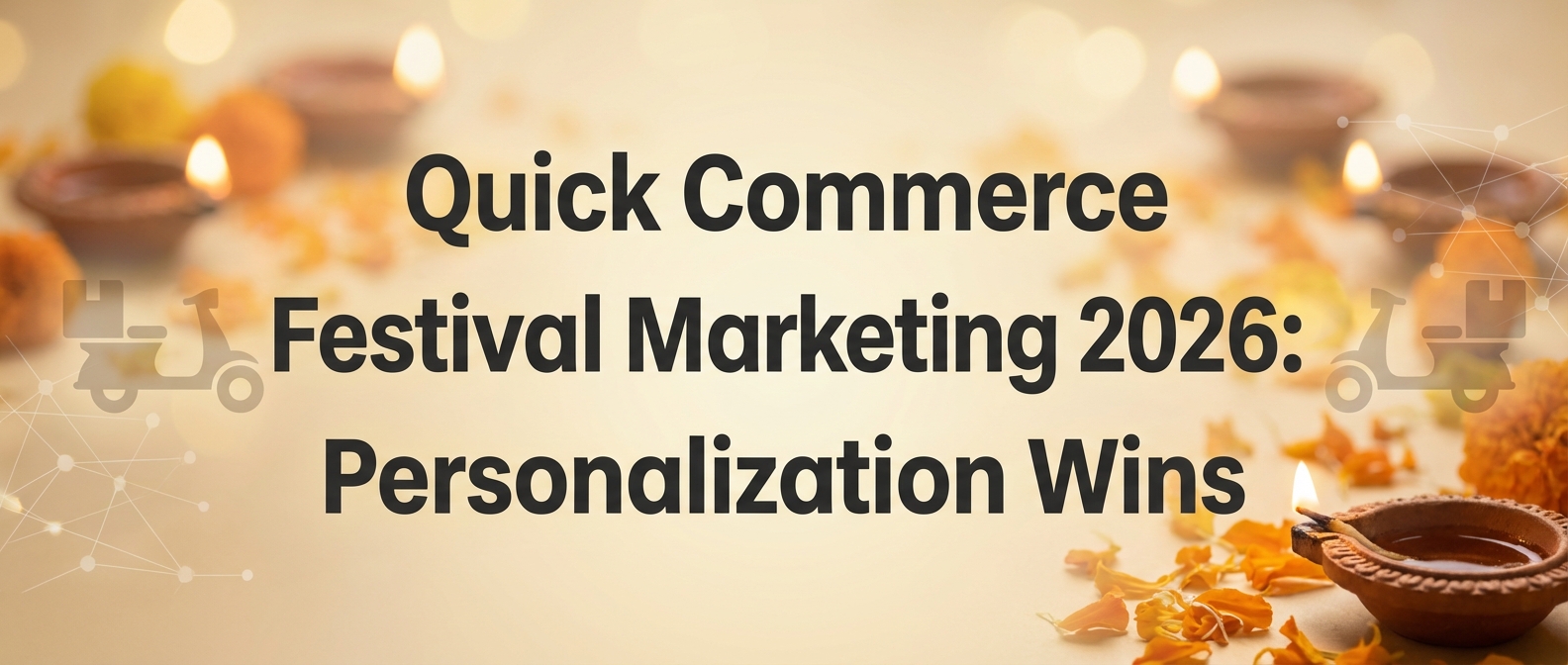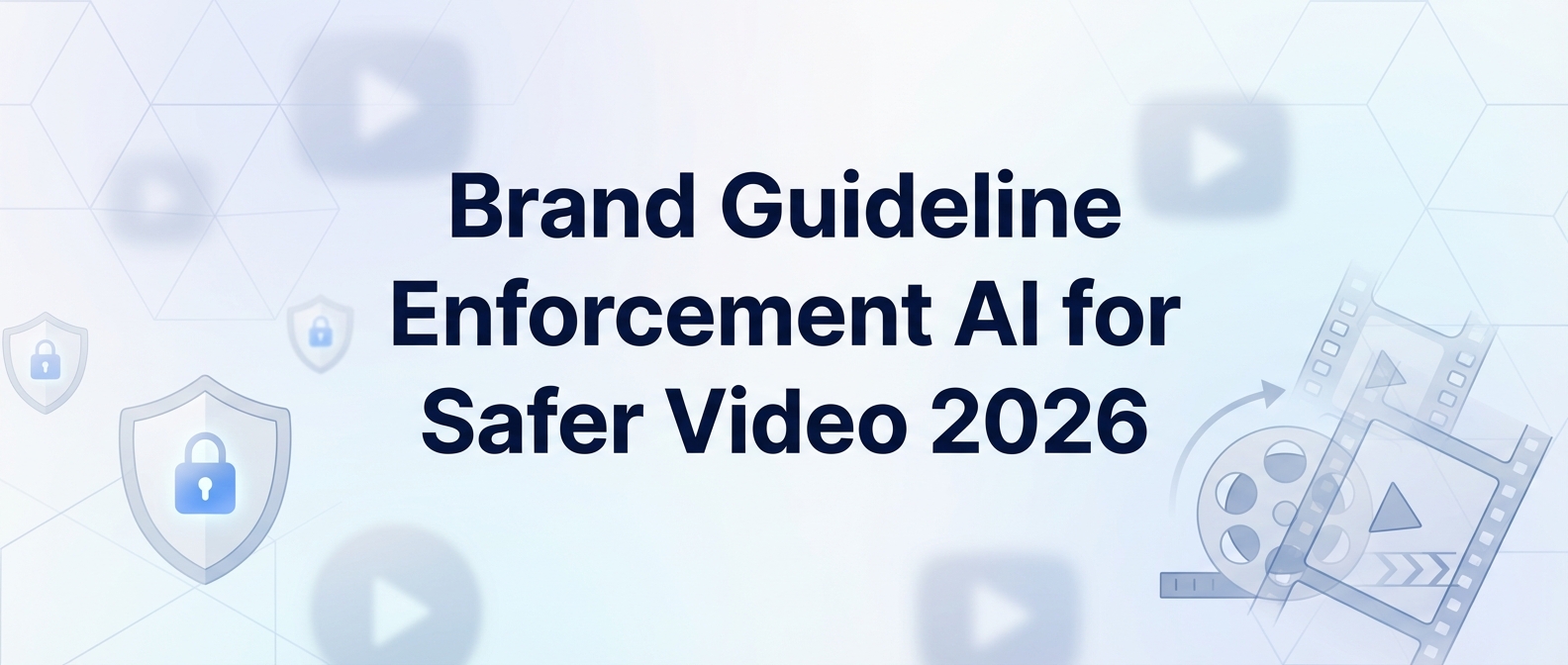2026 Marketing Technology Budget Planning: A CFO’s Guide to AI-Driven Investment
Estimated reading time: ~13 minutes
Key Takeaways
- AI Investment Benchmarks: By 2026, top marketers allocate 10-15% of martech budgets to AI-powered tools.
- Strategic Q4 Pilot Campaigns can justify larger enterprise-wide AI investments and measure early ROI.
- High-impact Personalized Video drives engagement, offering better returns than traditional media.
- ROI Dashboards tracking both cost savings and revenue lift strengthen CFO alignment.
- CMO-CFO Alignment is crucial for budget optimization and enterprise-wide strategic success.
The 2026 marketing technology budget planning cycle is no longer a routine financial exercise; it is a strategic inflection point for the modern enterprise. As Artificial Intelligence transitions from promising pilot programs to a core operational driver, CFOs and budget planning teams must move with precision. Strategic capital allocation across AI-powered personalization, automation, and video is now the primary determinant of market leadership and ROI.
This guide provides a comprehensive framework for navigating the complexities of enterprise AI marketing investment. We will explore critical investment trends, tactical Q4 allocation strategies, and robust frameworks for measuring marketing automation ROI. Furthermore, we will dissect how to justify AI video marketing budgets and align CMO budget priorities with overarching enterprise goals for sustainable growth and optimization.
1. Setting the AI Budget Baseline for 2026
Enterprise technology spending in 2026 is defined by the total outlay on marketing technology across all channels, platforms, and tools. Within this landscape, AI has carved out a non-negotiable share of the budget. It has fundamentally shifted from an experimental expenditure to an essential component for competitive operations.
Leading market analysis indicates a clear benchmark: by 2026, top-performing marketing organizations will dedicate 10-15% of their total martech budgets specifically to AI-powered tools. This allocation reflects AI’s validated role in driving efficiency, engagement, and revenue. The AI marketing market is forecast to reach an astounding $47 billion by 2026, with an estimated 88% of marketers leveraging AI in their daily workflows.
For CFOs, this data provides a crucial baseline. Compare your organization’s current or projected AI spend against this 10-15% benchmark. If the allocation is significantly lower, it’s time to conduct a thorough audit of your existing martech stack to identify redundancies and opportunities for reallocating funds toward high-impact AI initiatives.
Source: https://magnet.co/articles/2026-ai-marketing-predictions
2. Understanding Enterprise AI Marketing Investment
An enterprise AI marketing investment goes far beyond procuring off-the-shelf software. It encompasses strategic funding for sophisticated capabilities like custom Large Language Models (LLMs), autonomous campaign agents, advanced personalization engines, and the establishment of internal AI Centers of Excellence (CoE).
The trend for 2026 shows a decisive move away from basic AI tools toward these advanced deployments. Companies are building proprietary language models trained on their own data to create unique customer experiences. They are deploying autonomous AI agents that can not only execute campaigns but also handle strategic optimizations in real-time, freeing human teams to focus on innovation and high-level strategy. Platforms like TrueFan AI enable this level of sophistication in areas like personalized video, demonstrating the power of purpose-built AI engines.
The impact is measurable and significant. Research shows that leveraging AI for predictive analytics can improve customer purchase frequency by up to 35%. To ensure your investments deliver similar returns, it is critical to evaluate vendors against a robust set of criteria. https://www.truefan.ai/blogs/cdp-video-personalization-integration
Bullet-Proof AI Vendor Evaluation Criteria:
- Scalability: Can the platform handle enterprise-level volume? For instance, can it render millions of unique outputs daily without compromising performance?
- Integration Capabilities: Does the vendor offer robust APIs that seamlessly integrate with your existing CRM, ERP, and marketing automation platforms?
- Security and Compliance: Is the vendor SOC 2 and ISO 27001 certified? How do they handle data privacy, consent, and ethical AI usage?
- Customization and Support: Can the platform be tailored to your specific use cases, and what level of technical and strategic support is provided?
Source: https://www.joineta.org/blog/how-technology-budgets-will-evolve-in-2026-for-smbs-and-enterprises
Source: https://martech360.com/marketing-automation/how-ai-will-change-martech-by-2026/
3. Q4 Budget Allocation Strategies for AI Initiatives
Q4 budget allocation strategies are no longer just about spending remaining funds. For forward-thinking enterprises, it’s about making strategic investments that build momentum for the upcoming fiscal year. There is a clear trend of organizations shifting year-end spend toward AI initiatives that enhance digital agility and provide real-time optimization capabilities.
To capitalize on this, CFO budget planning teams should consider earmarking up to 20% of the remaining Q4 marketing budget for pilot AI campaigns. This approach allows the organization to test new technologies in a controlled environment and gather critical ROI data to justify a larger investment in the 2026 budget.
Autonomous AI agents are a prime candidate for these pilots. Use cases include real-time bid adjustments in programmatic advertising, automated A/B testing of ad creative, and even generating campaign variations through AI-powered virtual reshoots, which eliminates the need for costly and time-consuming physical production.
Mini-Template for Q4 Budget Reforecast:
-
Line Item: AI Software & Platform Licenses
- Description: Pilot program licenses for AI personalization engine or autonomous campaign manager.
- Forecast: ₹[Amount]
-
Line Item: AI-Powered Creative Production
- Description: Fees for virtual reshoots and AI-generated content variations for A/B testing.
- Forecast: ₹[Amount]
-
Line Item: Integration & Technical Support
- Description: Costs associated with API integration into existing martech stack (e.g., CRM, CDP).
- Forecast: ₹[Amount]
-
Line Item: Data & Analytics Onboarding
- Description: Setup costs for performance dashboards and ROI tracking for the pilot.
- Forecast: ₹[Amount]
Source: https://magnet.co/articles/2026-ai-marketing-predictions
Source: https://www.joineta.org/blog/how-technology-budgets-will-evolve-in-2026-for-smbs-and-enterprises
4. Marketing Automation ROI Planning
Marketing automation ROI planning is the financial framework used to measure the value generated by AI-powered workflows. This goes beyond simple cost-cutting to encompass revenue lift, operational efficiency gains, and improvements in customer lifetime value. A successful plan requires a clear definition of KPIs from the outset.
The efficiency gains alone are compelling. Studies show that AI-powered automation saves marketing professionals between 1 to 5 hours per week, freeing up valuable time for strategic tasks. More importantly, this automation directly boosts campaign impact. The same predictive analytics that can lift purchase frequency by 35% must be tracked against clear financial metrics.
To build a convincing business case, create an ROI dashboard with clearly defined inputs and outputs. Inputs should include software license costs, integration fees, and implementation time. Outputs should track metrics like incremental revenue per campaign, reduction in cost per lead, and uplift in customer conversion rates. Solutions like TrueFan AI demonstrate ROI through meticulously tracked metrics, such as a 17% higher message read rate in real-world campaigns. https://www.truefan.ai/blogs/video-personalization-roi-metrics
Sample ROI Calculation:
-
Initial Investment (Input):
- AI Automation Platform Annual License: ₹800,000
- Integration & Setup Cost: ₹200,000
- Total Investment: ₹1,000,000
-
Projected Returns (Output):
- Revenue lift from personalized campaigns (5% on ₹2 Crore revenue base): ₹1,000,000
- Cost savings from reduced manual hours (2 FTEs x 5 hours/week x ₹1,000/hour x 50 weeks): ₹500,000
- Efficiency gain from faster campaign deployment (value assigned): ₹500,000
- Total Return: ₹2,000,000
- Net ROI: (₹2,000,000 - ₹1,000,000) / ₹1,000,000 = 100%
Source: https://magnet.co/articles/2026-ai-marketing-predictions
Source: https://martech360.com/marketing-automation/how-ai-will-change-martech-by-2026/
5. Justifying AI Video Marketing Budgets
Justifying an AI video marketing budget requires a paradigm shift from traditional media buying. Instead of focusing on the broad reach of television or generic digital ads, the business case for AI video rests on its ability to deliver hyper-personalization at an unprecedented scale, creating millions of unique, one-to-one connections.
The cost-benefit analysis is overwhelmingly positive. At scale, a personalized video can cost as little as ₹15 per unit, a fraction of the CPM for traditional media, while delivering significantly higher engagement and conversion rates. Real-world case studies provide undeniable proof of its effectiveness:
- Zomato’s Mother’s Day Campaign: Generated 354,000 unique, personalized videos in a single day, featuring celebrities wishing users’ mothers by name. The campaign drove a record number of orders and generated massive organic social media buzz.
- Goibibo’s Travel Nudges: Re-targeted users with personalized videos from cricketer Rishabh Pant that mentioned their specific searched destination. This resulted in a 17% higher message read rate on WhatsApp compared to standard text-based offers.
- Hero MotoCorp’s Festive Greetings: Delivered 2.4 million personalized video greetings to customers, featuring celebrities who mentioned the owner’s name and their local dealership. This initiative drove a significant increase in dealership visits for a service camp.
To secure executive buy-in, structure your budget proposal like an executive summary.
Executive Summary Outline for AI Video Investment:
- The Challenge: Our current marketing struggles with engagement fatigue and low conversion rates from generic, one-size-fits-all video advertising.
- The Solution: Implement an AI-powered video personalization platform to deliver unique video messages to each customer at scale, addressing them by name and referencing their specific context (e.g., recent purchase, location).
- The Financials & ROI:
- Investment: Target segment size (e.g., 500,000 customers) × cost per video (e.g., ₹15) = Total Spend (₹7.5 million).
- Projected Return: Projected lift in engagement (e.g., 20%) × Average Order Value (e.g., ₹1,000) × Conversion Rate (e.g., 5%) = Projected ROI.
- The Recommendation: Approve a pilot budget of ₹[Amount] to validate the projected ROI on a smaller segment before a full-scale rollout in 2026.
6. Aligning CMO Budget Priorities with Enterprise Goals
For a marketing technology budget to be effective, CMO budget priorities must be tightly aligned with the broader financial and strategic goals of the enterprise. In 2026, those priorities are centered on technology investments that deepen customer relationships through personalization, dynamic creative optimization, and real-time customer journey mapping.
A key trend among CMOs is the increasing emphasis on ethical data use and the acquisition of zero-party data—information that customers intentionally and proactively share with a brand. This data is a goldmine for personalization, allowing for highly relevant marketing that respects privacy regulations and builds trust. According to recent industry reports, over 75% of CMOs state their 2025 budget is directly tied to proving performance, making data-driven alignment with CFOs essential. https://www.truefan.ai/blogs/enterprise-video-personalization-strategy
To ensure this alignment is maintained, schedule quarterly budget check-ins between the CMO and CFO. These meetings should focus on a shared set of KPIs that bridge marketing activities with financial outcomes, such as customer acquisition cost (CAC), lifetime value (LTV), brand sentiment scores, and compliance metrics.
Do's & Don'ts for CMO/CFO Budget Alignment Meetings:
| Do | Don't |
|---|---|
| Speak in terms of ROI and revenue impact, not just marketing metrics like clicks. | Present vanity metrics without connecting them to financial outcomes. |
| Present data-backed forecasts for proposed technology investments. | Request budget increases without a clear business case and projected return. |
| Collaboratively define KPIs that reflect both marketing success and financial health. | Operate in a silo, assuming the CFO understands the nuances of martech. |
| Discuss risk mitigation, including data privacy and AI governance. | Ignore the financial guardrails and compliance requirements of the enterprise. |
Source: https://huble.com/blog/ai-in-marketing
Source: https://magnet.co/articles/2026-ai-marketing-predictions
7. Enterprise Marketing Budget Optimization Techniques
Enterprise marketing budget optimization is the practice of using data analytics and AI to dynamically reallocate spend across channels and campaigns to maximize performance and ROI. This moves beyond static annual budgets to a more fluid, agile approach where funds are directed to the highest-performing initiatives in near real-time.
Advanced analytics platforms and autonomous AI agents are at the heart of modern budget optimization. These systems can analyze thousands of data points—from ad performance and social media engagement to sales data—to identify which channels are delivering the best returns. For example, an AI might recommend shifting funds from a low-performing search campaign to a high-converting social video initiative mid-quarter.
Zero-party data plays a crucial role here, allowing for fine-tuned personalization that improves channel effectiveness without infringing on user privacy. This data helps the AI make smarter decisions about where to allocate resources for maximum impact. https://www.truefan.ai/blogs/real-time-video-personalization
5-Step Quarterly Budget Re-Optimization Process:
- Data Ingestion: Consolidate performance data from all marketing channels into a centralized analytics dashboard.
- AI-Powered Analysis: Use an AI tool to analyze the data, identify performance trends, and model various budget reallocation scenarios.
- Strategic Review: The marketing and finance teams review the AI-generated recommendations, ensuring they align with strategic business goals.
- Agile Reallocation: Execute the budget shifts, moving funds from underperforming areas to those with the highest projected ROI. This process should be completed in under one week to maintain agility.
- Measure and Iterate: Continuously monitor the performance of the newly allocated funds and feed the results back into the system for the next optimization cycle.
Source: https://onlim.com/en/5-relevant-ai-trends-for-2026/
8. Scaling AI Personalization & Multilingual Campaigns
For global enterprises, AI personalization budget planning must account for the immense complexity of localization. True one-to-one marketing requires speaking to customers in their preferred language, a challenge that has historically been resource-intensive and difficult to scale.
AI has shattered this barrier. Modern generative AI platforms can now create personalized, localized content across hundreds of languages from a single source file. For example, TrueFan AI’s 175+ language support and Personalised Celebrity Videos technology allows a brand to record a message with a celebrity once and then automatically generate versions in multiple languages with perfect lip-sync and voice retention. This capability is not just a novelty; it is a strategic imperative. Industry data suggests that personalized multilingual video campaigns can increase customer engagement by up to 3x compared to generic, single-language ads. https://www.truefan.ai/blogs/multilingual-personalized-video-campaigns
When budgeting for this, the calculation is straightforward: Total Spend = (Unit Cost Per Language × Number of Segments) + Platform Fees
Mini Case Study: Global Bank’s Multilingual Product Launch
A large international bank needed to launch a new investment product across five different regions in Asia, each with a distinct primary language. Previously, this would have required five separate video shoots, extensive translation and dubbing work, and a multi-month timeline. By leveraging an AI personalization platform, they were able to produce five fully localized, personalized video campaigns in under one week, using a single video asset of their brand ambassador. This not only accelerated their time-to-market but also significantly reduced production costs while boosting engagement in each region.
Conclusion & Action Items
The era of AI-driven marketing is here, and successful 2026 marketing technology budget planning requires a proactive and strategic approach. CFOs and their teams must champion the allocation of 10-15% of martech budgets to AI, leverage tactical Q4 strategies to pilot new technologies, and implement rigorous frameworks to measure marketing automation ROI. The justification for advanced investments, particularly in AI-powered video, is found in compelling case data that demonstrates unparalleled engagement and conversion.
To translate this strategy into action, we recommend the following steps:
- Conduct a 30-Day Budget Audit: Analyze your current martech spend to identify funds that can be reallocated to AI initiatives.
- Pilot One AI Video Campaign: Launch a small-scale, hyper-personalized video campaign to gather firsthand data on its ROI and operational impact.
- Establish a Cross-Functional Budget Review Process: Schedule regular meetings between marketing, finance, and IT to ensure continuous alignment and agile budget optimization.
By embracing these principles, your organization can harness the full power of AI, ensuring your enterprise AI marketing investment delivers maximum value and a sustainable competitive advantage.
Frequently Asked Questions
1. What is a realistic starting budget for a pilot AI marketing program?
A realistic pilot budget typically ranges from 5-10% of your total annual marketing technology spend. This is generally sufficient to license a new platform for a limited time, cover integration costs, and run a targeted campaign to generate meaningful ROI data before committing to a larger, enterprise-wide investment.
2. How can we measure the ROI of AI tools that primarily improve efficiency rather than directly generating revenue?
For efficiency-focused AI tools, ROI can be calculated by quantifying the value of time saved. Calculate the number of hours saved per employee per week, multiply by their hourly cost, and annualize the figure. This “soft cost” saving can then be compared against the tool’s investment cost to determine ROI.
3. What are the biggest risks associated with enterprise AI marketing investment?
The primary risks include data security breaches, non-compliance with privacy regulations (like GDPR), and ethical concerns around the use of AI and customer data. Another significant risk is poor user adoption. These can be mitigated by choosing vendors with robust security certifications (ISO 27001, SOC 2) and by implementing strong internal governance and training programs.
4. How can we justify investing in a sophisticated tool like TrueFan AI for scalable video personalization over just using standard digital video ads?
The justification lies in performance and ROI. While standard video ads offer broad reach, personalized videos deliver significantly higher engagement, conversion rates, and brand loyalty. You can justify the investment by presenting case studies (like Zomato or Goibibo) and projecting the ROI based on a measurable lift in key business metrics, such as a 15-20% increase in conversion or a 10% reduction in customer churn.
5. How long does it typically take to see a return on an AI marketing technology investment?
The time to see a return varies by the complexity of the implementation. For agile, API-driven platforms, you can often see measurable results from pilot campaigns within a single quarter (90 days). Larger, more complex implementations, such as building an internal AI Center of Excellence, may require 12-18 months to demonstrate their full financial impact.




